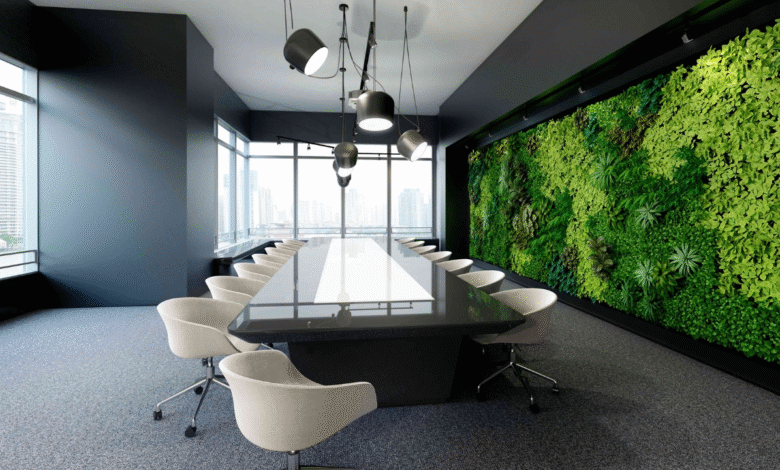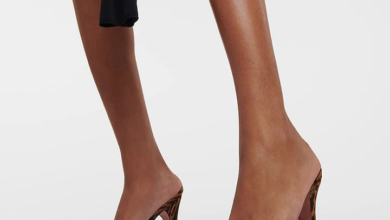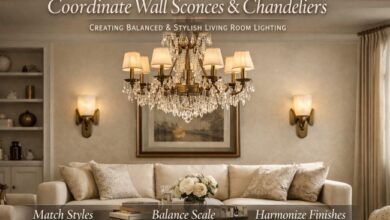10 Eco-Friendly Design Choices That Set Your Office Apart

A workspace that is fresh, functional, and sustainable is no longer just a trend – it has become the new standard. The eco-friendly designs that reduce the amount of waste, save energy, and provide a healthier atmosphere are getting more preference from the companies.
Be it an office redesign or the planning of a new one, there are many simple and smart ways to make the space magnificent without complicating or increasing the costs.
Let’s take a look at 10 eco-friendly design options that can really give your office a brand new look.
1. Use Recycled and Sustainable Materials
The materials you pick when doing a commercial fit-out can hugely impact the whole place. The use of recycled wood, reclaimed metal, and eco-friendly fabrics can save a lot of waste and the space gets its natural character.
Try this:
- Instead of vinyl or tile, go for bamboo or cork flooring.
- Select the furniture that is made from recycled or FSC-certified wood.
- Opt for low-VOC paints that do not emit any harmful chemicals.
All these options are not only good for the earth but also provide your office space a cozy, warm, and natural atmosphere.
2. Maximize Natural Light
The presence of the sun changes the whole scenario. It uplifts mood, decreases the need for artificial lighting, and cuts down on energy consumption. The smart daylight offices feel more open, relaxing, and inviting.
Try this:
- Position desks near windows.
- Make use of glass walls or partitions to allow light to pass through.
- Clean and empty windows.
You will spend less on energy and provide employees with the space which will feel brighter and livelier.
3. Bring Plants and Green Walls
Plants do not just make the place look good, they purify air and bring a bit of life to this place. Starting with small plants on a deserted desk and up to entire green walls, there is no bad way to be green indoors.
Try this:
- Plant potting plants in working places and break rooms.
- Hanging planters or vertical gardens would be suitable to use in tight spaces.
- Select more resistant plants such as snake plants or peace lilies.
Such nature can lessen the stress and increase creativity – which every contemporary office requires.
4. Select Energy-Efficient Lighting
In most offices, lighting consumes some of the largest amounts of energy. Replacing old-fashioned alternatives with efficient alternatives is a cost-effective and fast way of going green.
Try this:
- Install LED bulbs instead of fluorescent lights.
- Install motion sensors in restrooms or meeting rooms.
- Install dimmers to control the brightness during the day.
These easy replacements can save on your energy bills as well as make your working room bright and comfortable.
5. Create a Flexible Layout
The flexibility of the office design will enable you to make better use of space and minimal wastage in the long-run. Instead of set designs, go with the one that is able to be reconfigured as your team expands or increases in size.
Try this:
- Have modular furniture which can be easily rearranged.
- Create multi-purpose spaces for meetings, breaks, and collaboration.
- Use movable dividers to change layouts quickly.
This kind of design keeps your office useful for years without the need for major rebuilds.
6. Focus on Air Quality
A healthy and environmentally friendly workspace means clean air. Unclean air may leave employees weary or sick whereas clean air enables all to be fresh and alert.
Try this:
- Plants and natural ventilation should be used where possible.
- Use non-toxic fume materials.
- Have air filters serviced and maintained clean.
Healthy air and healthier people and productivity (win win) to your business.
7. Go Paperless Where Possible
Paper waste is one of the easiest things to reduce in an office. With so many digital tools available, going paperless is simpler than ever.
Try this:
- Use digital notes, contracts, and reports.
- Store files in the cloud instead of printing.
- To make printers print in double sided mode.
Not only does this save trees but it also cleans up your office and makes it more efficient.
8. Invest in Quality and Not Quantity
Inexpensive materials or furniture may also appear to be a great deal initially, but they wear out sooner and require replacement sooner. In the long-term, the waste is minimised by investing in durable, well-made items.
Try this:
- Select furniture that has long warranties or even replaceable parts.
- Select classic, historic designs, which will not appear dated.
- Recycle and use products rather than disposing them.
A few high-quality pieces can completely change the look and feel of your workspace.
9. Repurpose and Redesign Existing Spaces
Before starting something new, see what you already have. Many companies are turning warehouse fit outs and old industrial spaces into creative, modern offices. This approach saves materials, reduces construction waste, and gives your business a cool, character-filled environment.
Try this:
- Retain any walls or floors you may have in good condition.
- Bare brickwork or beams to emphasize natural characteristics.
- Combine new design with new materials to have a different style.
Repurposing is not only environmentally friendly but a story and characterizes a single space.
10. Foster Green Keys Among Employees
Design is not the only aspect of sustainability. It’s also about people. Habits that are built are best at the environmentally friendly offices.
Try this:
- Set up recycling and compost bins.
- Encourage reusable bottles, cups, and containers.
- Recognize and reward environmentally friendly actions, such as riding a bicycle to work and using less power.
The participation of all makes sustainability a company culture, not only a product of design.
Final Thoughts
An eco-friendly office is not merely a good idea but a wise financial outlay. It is a cost-cutter, promotes the well-being of the workers, and demonstrates to the customers that your corporation is concerned about the planet’s future.
No need to revamp everything at once. Start with little things. Choose one or two from these design options and then go on to others. Each and every step turns your office into a greener, smarter, and more inspiring place.



